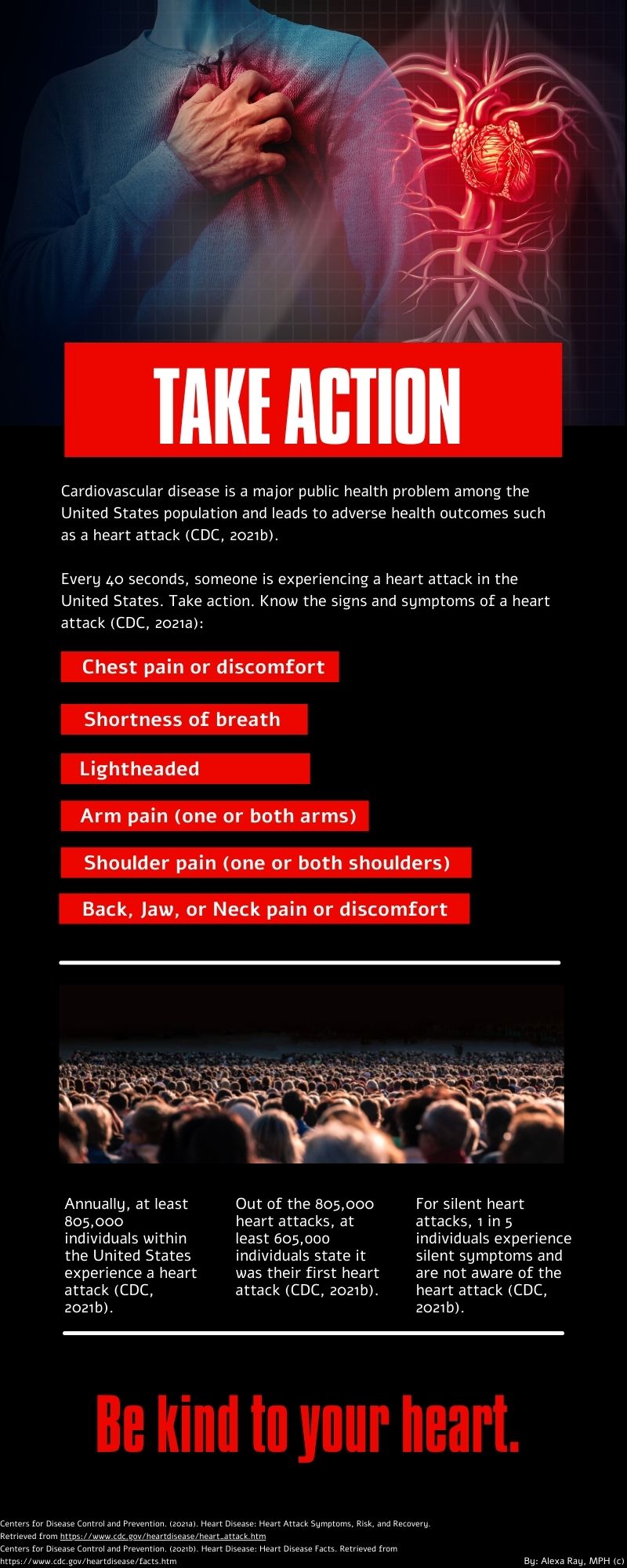Understanding Cardiovascular Disease
Cardiovascular disease is a major public health problem that affects the United States population. Be kind to your heart and become aware of the preventable chronic illness by knowing the impact and barriers to treatment significant to cardiovascular disease.
Cardiovascular disease is a preventable non-communicable disease that disrupts the function of the cardiovascular system, which leads to detrimental health outcomes (1). The cardiovascular system is known to also be referred to as the circulatory system, which plays a role in the blood flow of the human body (2). For instance, the cardiovascular system consists of different arteries and veins that help to control the blood flow of the heart (2). The role of the arteries is to pump blood away from the heart, whereas the veins are responsible for pumping blood towards the heart (2). When it comes to cardiovascular disease, the coronary artery can become affected by the plaque buildup in the artery, which then causes poor blood flow of the heart and can lead to a heart attack(1).
At least 47 percent of the United States population has 1 of 3 main risk factors for heart disease (3). The The following main risk factors for heart disease are as followed (4):
- High Blood Pressure
- High Cholesterol Level
- Smoking
In addition, other risks include (4):
- Diabetes
- Overweight
- Obesity
- Unhealthy diet
- Physical inactivity
- Excessive alcohol use
The following actions one can take to reduce their risk for heart disease and a heart attack are as followed (5)
- Engage in healthy lifestyle behaviors:
- Consume healthy foods and beverages
- Avoid high sodium foods (5)
- Avoid beverages with a lot of sugar (5)
- Avoid high saturated foods (5)
- Drink alcohol in moderation (5)
- Maintain a health weight
- An unhealthy weight can contribute to the adverse health effects related to heart disease such as a heart attack (5).
- Incorporate physical activity
- Participate in physical activity at least 2 hours and 30 minutes per week (5).
- Do not engage in smoking
- Smoking can increase your risk for heart disease and lead to a heart attack (5).
- Consume healthy foods and beverages



